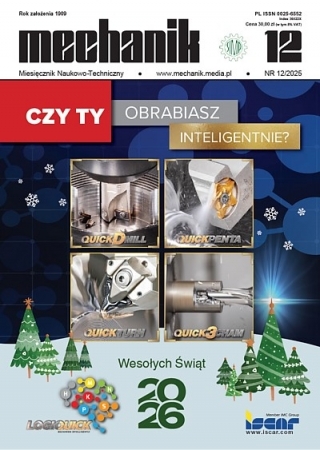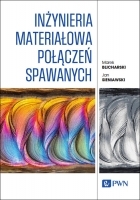Metamateriały mechaniczne wytwarzane w sposób przyrostowy *
Mechanical metamaterials manufactured by increasing technology
Mechanik nr 07/2018 - Metrologia techniczna
STRESZCZENIE: Przedstawiono pierwszą fazę prac, która obejmowała badania mechanizmów metamaterialnych z gumopodobnych tworzyw sztucznych, a także wpływu ich struktury i geometrii na przenoszenie zadanej siły oraz przemieszczenia w zaprojektowanym modelu, wykonanym techniką przyrostową FDM (fused deposition modeling). Celem pracy jest ustalenie wpływu parametrów technologicznych oraz zmian geometrii i wypełnienia na parametry wytrzymałościowe wytwarzanego obiektu, a także rozważenie możliwości zastąpienia klasycznych zespołów elementów mechanicznych elementami wykonanymi z użyciem struktur metamaterialnych.
SŁOWA KLUCZOWE: drukarki 3D, technologie przyrostowe, metamateriał, metamateriały mechaniczne
ABSTRACT: Presented is the first phase of work, which concerned the study of metamaterial mechanisms made of rubber-like plastics, and the impact of their structure and geometry on the transfer of a given force and displacement in a designed model, made using FDM (fused deposition modeling). The aim of the work is to examine the impact of technological parameters and changes in geometry and filling on the strength parameters of the manufactured object and further considerations on replacing the classic assemblies of mechanical elements with elements made using metamaterial structures.
KEYWORDS: 3D printers, additive technologies, metamaterial, mechanical metamaterial
BIBLIOGRAFIA / BIBLIOGRAPHY:
- Dziewit P., Janiszewski J. „Ocena jakościowa procesu deformacji regularnych struktur komórkowych wykonanych techniką druku 3D”. Mechanik. 3 (2018): s. 250–252.
- Kinsler P., McCall W. “The futures of transformations and metamaterials”. Blackett Laboratory, Imperial College London, Prince Consort Road, London SW7 2AZ, United Kingdom.
- Kret M. „Drukarki 3D – porównanie”. Mechanik. 11 (2010): s. 864–866 (polskie opracowanie na podstawie T.A. Grimm & Associates, Inc: 3D Printer Benchmark – North American Edition. www.tagrimm.com/benchmark-2010).
- Madej J., Śliwka M. „Badanie parametrów mechanicznych struktur drukowanych o różnym zagęszczeniu”. Mechanik. 11 (2017): s. 1072–1074.
- Miazio Ł. „Badanie wytrzymałości na rozciąganie próbek wydrukowanych w technologii FDM z różną gęstością wypełnienia”. Mechanik. 7 (2015): s. 533–538.
- PN-EN ISO 527… – Oznaczanie właściwości mechanicznych przy statycznym rozciąganiu.
- Normy ISO 3167 i ISO 294 dotyczące wykonywania i geometrii kształtek z tworzyw termoplastycznych stosowanych do badań.
- Novakova-Marcincinova L., Novak-Marcincin J. “Testing of materials for rapid prototyping fused deposition modelling technology”. World Academy of Science. Engineering and Technology. 70 (2012).
- Schumacher C., Bickel B., Rys J., Marschner S., Daraio C., Gross M. “Microstructures to control elasticity in 3D printing”. ACM Transactions on Graphics. 34, 4 (2015).
- Vinay H. Ba, Govindarajub H.K., Prashanth Banakarc. “AMMMT 2016 Experimental Study on Mechanical Properties of Polymer Based Hybrid Composite Materials Today”: Proceedings. 4 (2017): s. 10904–10912.
DOI: https://doi.org/10.17814/mechanik.2018.7.65
* Artykuł recenzowany























